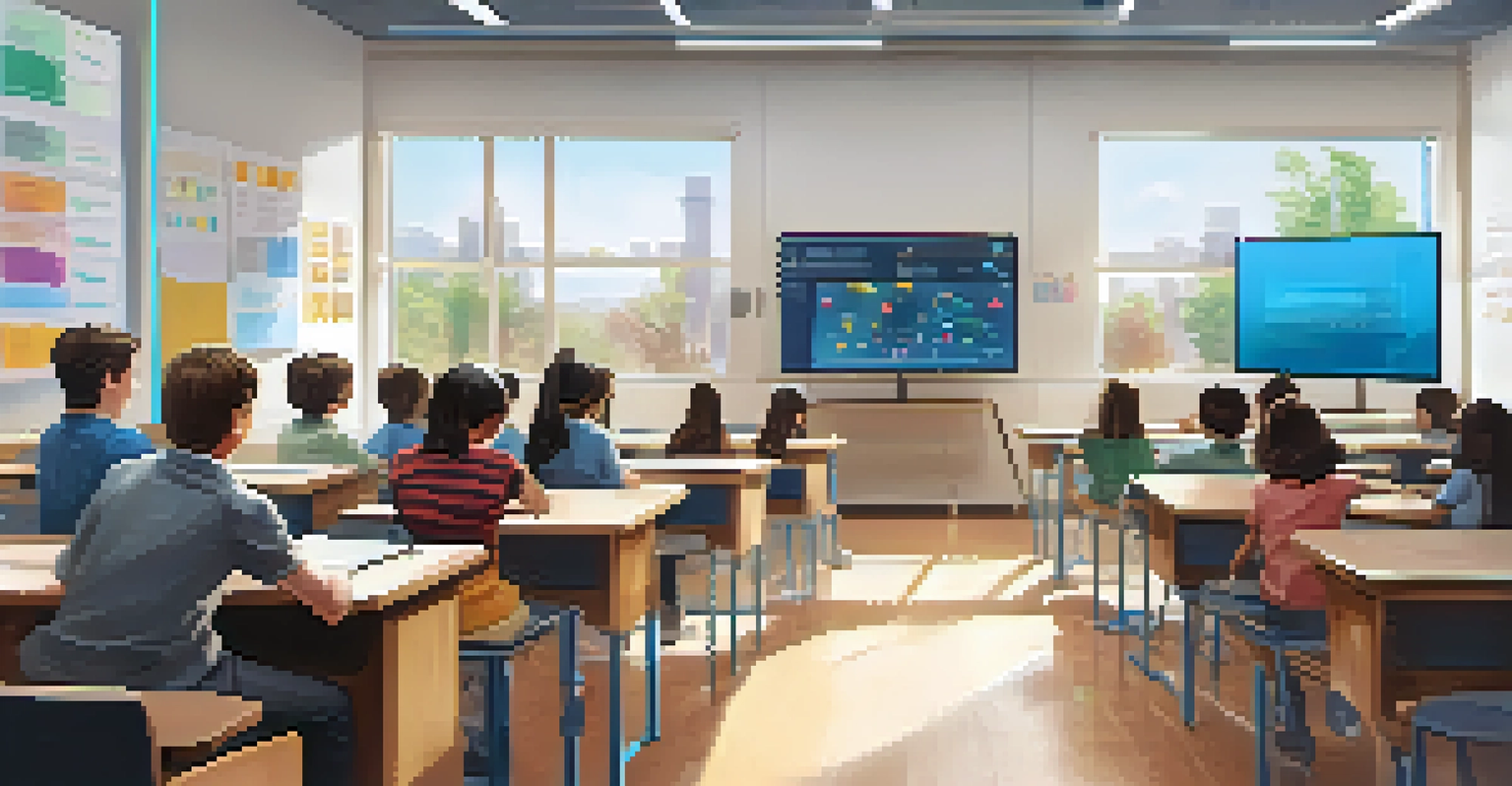Utilizing Data Analytics for Effective Personalized Learning

Understanding Personalized Learning in Education
Personalized learning is an approach that tailors education to individual students' needs, strengths, and interests. Imagine a classroom where each student follows a unique learning path, progressing at their own pace. This method not only fosters engagement but also encourages a sense of ownership in the learning process.
Personalized learning is not a trend; it’s a revolution in how we think about education and how we can tailor it to the needs of individual students.
In traditional educational settings, a one-size-fits-all model often leaves students either bored or overwhelmed. Personalized learning flips that script, creating opportunities for learners to thrive. By leveraging technology and data, educators can gain insights into how students learn best, paving the way for customized experiences.
Ultimately, personalized learning aims to empower each student, ensuring that no one is left behind. It's about recognizing that every learner is unique and deserves an educational journey that reflects their individuality.
The Role of Data Analytics in Education
Data analytics in education involves collecting and analyzing student data to inform teaching practices and improve learning outcomes. Think of it as a treasure map that guides educators to pinpoint areas where students excel or struggle. By examining patterns in data, teachers can make informed decisions that enhance the learning experience.

For instance, analytics can reveal which topics students find challenging, allowing educators to adjust their instruction accordingly. This not only helps in addressing knowledge gaps but also encourages a proactive approach to teaching. By understanding the data, teachers can implement strategies that resonate with their students.
Personalized Learning Empowers Students
This approach tailors education to individual needs, enhancing engagement and ownership in the learning process.
Moreover, data analytics can track student progress over time, providing valuable insights into long-term learning trends. This ongoing assessment enables educators to fine-tune their methods and maintain a dynamic learning environment.
Collecting Relevant Data for Effective Learning
To harness the power of data analytics, it's vital to collect the right types of data. This can include test scores, attendance records, and even feedback from students. Each piece of information contributes to a fuller picture of a student's learning journey, enabling a more tailored approach.
Data is the new oil, and in education, it fuels the engine of personalized learning.
However, it's not just about quantity; quality matters too. Educators need to ensure that the data collected is accurate and relevant to the learning objectives. The goal is to create a comprehensive dataset that reflects each student's unique learning profile.
Additionally, data collection should be ongoing rather than a one-time event. By continuously gathering information, educators can adapt their strategies in real time, ensuring they meet the evolving needs of their students.
Analyzing Data to Identify Learning Patterns
Once relevant data is collected, the next step is analysis. This process involves examining the data for trends and patterns that can inform instructional decisions. For example, educators might notice that students perform well in group projects but struggle with solo assignments.
Identifying these patterns allows teachers to tailor their approach, perhaps by incorporating more collaborative learning opportunities. It’s like having a mirror that reflects not just the current state of learning, but also potential paths for improvement.
Data Analytics Enhances Teaching
By analyzing student data, educators can identify challenges and adapt their instruction to improve learning outcomes.
Furthermore, analyzing data helps in recognizing diverse learning styles among students. By understanding these preferences, educators can diversify their teaching methods to accommodate various learners, fostering a more inclusive classroom environment.
Implementing Personalized Learning Strategies
With insights from data analytics, educators can implement targeted personalized learning strategies. These may include differentiated instruction, adaptive learning technologies, or individualized learning plans. Each strategy aims to meet students where they are, maximizing their potential.
For instance, adaptive learning platforms can adjust content based on a student's performance in real time, ensuring they are always challenged yet supported. This type of technology acts as a co-pilot in the learning journey, guiding students toward mastery.
Moreover, personalized strategies encourage student agency, allowing learners to take charge of their education. When students have a say in their learning process, they are more likely to stay engaged and motivated.
Monitoring Progress and Adjusting Approaches
Effective personalized learning is not a set-it-and-forget-it approach; it requires ongoing monitoring. Educators should regularly review student progress using the data collected to ensure that learning objectives are being met. This step is crucial for making timely adjustments to teaching methods.
Think of it as a gardener tending to a plant; regular check-ins allow for necessary pruning and care to help it flourish. If a student is struggling, educators can intervene quickly, providing additional resources or support tailored specifically to that learner's needs.
Continuous Monitoring is Essential
Ongoing assessment of student progress allows educators to make timely adjustments to their teaching strategies.
By fostering this responsive teaching environment, educators can create a culture of continuous improvement. Students come to understand that their learning journey is dynamic and can be adapted to suit their needs.
Future Trends in Data-Driven Personalized Learning
As technology continues to evolve, the future of personalized learning looks promising. Innovations such as artificial intelligence (AI) and machine learning are poised to play a significant role in refining data analytics in education. These technologies can analyze vast amounts of data quickly, identifying trends that might be missed by human analysis.
Imagine an AI tool that can predict a student's learning trajectory based on their interactions with course materials. This capability could lead to even more tailored educational experiences, ensuring that every student receives support precisely when they need it.

Ultimately, the goal is to create a seamless integration of data analytics and personalized learning. As educators embrace these advancements, the possibilities for enhancing student engagement and success are limitless.